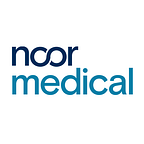The Economics of Unsafe Surgery in Developing Countries
Individuals in developing countries tend to have less access to healthcare services than those in industrialized countries, and generally within countries, the poor have less access to health services than their wealthier peers¹.
But what does this mean for their communities and countries as a whole?
First, it is important to identify a few key points on how this disparity in health access is manifested.
Access, itself, has been recognized by researchers as related to “the timely use of services according to need”¹. Check-ups, sickness, surgery, etc. may be required by each of us at certain times in our lives. However, poverty creates obstacles to acquiring these services in two principle ways: geographic accessibility (i.e., the physical distance or travel time from service delivery point to users) and availability (i.e., having the right type of care available to those who need it)¹.
In Sub-Saharan Africa, geography plays a large role in the types of health services that are available to people — especially in the case of surgery. Though many small-scale clinics may exist in a region, not all of them are fully prepared to carry out a safe surgery to the same standards that are expected in more affluent regions, or in larger urbanized areas within their own countries². Even a routine procedure such as sterilizing medical instruments may force medical workers to travel long distances, even sometimes hours, to a larger clinic in order to prepare them for a safe surgery. This brings up the next point — availability.
Having the appropriate type of service providers and materials is critical for providing equitable healthcare. Consider the number of hospital beds per 10,000 people in Africa and Europe. The former has less than 1 bed, while the latter has 64 beds. The stark contrast continues when looking at the number of nurses per 1,000 people. In Europe the average is 7.43, while in Africa the average stands at only 0.94 nurses serving every 1,000 people².
Why is the sterilization of medical equipment, a quite common procedure in developed countries, so often plagued with difficulty in the developing world?
Sterilization of medical instruments can be completed in a number of ways. Chemical sterilants, tabletop autoclaves, and even boiling water are utilized. However, the efficacy of these treatments varies widely. Proper medical sterilization requires temperatures of 121° Celsius and pressures of 1.5 bar. Boiling water (the most accessible from a practical and financial standpoint) is not effective enough when it comes to medical sterilization. At the same time, tabletop autoclaves are quite expensive and completely reliant on a stable electricity supply. In the developing world however, about 1.5 billion people do not have access to clinics with a stable electricity supply³. The geography and material access of rural health clinics thus jeopardizes their functioning and effective sterilization technology is simply not available to these clinics. Globally, approximately 1/5 of patients in the developing world suffer from post-operation infection, due to, among other causes, the use of improperly sterilized equipment⁴.
What does this mean for the people of these regions?
To begin with, health has direct socioeconomic consequences not only for individuals, but their families as well. “An important economic consequence of disease or injury at the microeconomic level of households, firms and government is that, through its impact on functioning, individuals are unable to perform their usual day-to-day activities”⁵. Health therefore plays a critical role in addressing the United Nation’s sustainable development goals (SDGs): SDG 1, No Poverty, and SDG 3, Good Health and Well-being.
Health contributes to an individual’s utility and social welfare, with benefits propagating throughout their associated communities through their economic and social interactions. Even the enjoyment of consumption of other goods and services is partly influenced by the level of health. In economic terms, the marginal utility derived from consumption (i.e., the benefit gained from consuming one additional unit of a product or service) is partly a function of health status. Without good health, other economic objectives such as producing income stand to be compromised⁵. Safer surgery through proper medical sterilization thus also has a direct impact on SDG 8: Decent Work and Economic Growth.
Every surgery performed with unsafe instruments compromises the financial potential of individuals, and in turn degrades the economic potential of communities at large. Material access, in the form of proper sterilization equipment, is an important piece of the puzzle in addressing this issue.
Noor Medical’s mission of improving access to equitable healthcare is driven to lessen the detrimental effects of poor health on a population’s ability to achieve unfettered economic and social development. We accomplish this by providing a hybrid autoclave solution which can operate using a variety of power inputs, ensuring that even in electricity grid disrupted areas access to critical medical sterilization is possible.
We appreciate help along our journey, and are currently crowdfunding our next field testing at a number of health clinics in Chad. Please consider supporting us here.
To learn more about Noor Medical please visit our website: www.noor-med.com or follow us on facebook, linked in and twitter.
Sources:
1) Peters, D. H., Garg, A., Bloom, G., Walker, D. G., Brieger, W. R., & Rahman, M. H. (2008). Poverty and Access to Health Care in Developing Countries. Annals of the New York Academy of Sciences,1136(1), 161–171. doi:10.1196/annals.1425.011
2) WORLD HEALTH ORGANIZATION. 2007. World Health Survey Results. Accessed September 3, 2007, at: http://www. who.int/healthinfo/survey/whsresults/en/index.html.
3) WHO. (n.d). Solar powered autoclaves. http://www.who.int/medical_devices/poster_a18.pdf
4) Adair-Rohani, H., Zukor, K., Bonjour, S., Wilburn, S., Kuesel, A. C., Hebert, R., & Fletcher, E. R. (2013). Limited electricity access in health facilities of sub-Saharan Africa: a systematic review of data on electricity access, sources, and reliability. Global Health: Science and Practice, 1(2), 249–261. doi:10.9745/ghsp-d-13–00037
5) WHO GUIDE TO IDENTIFYING THE ECONOMIC CONSEQUENCES OF DISEASE AND INJURY. World Health Organization. 2009.
